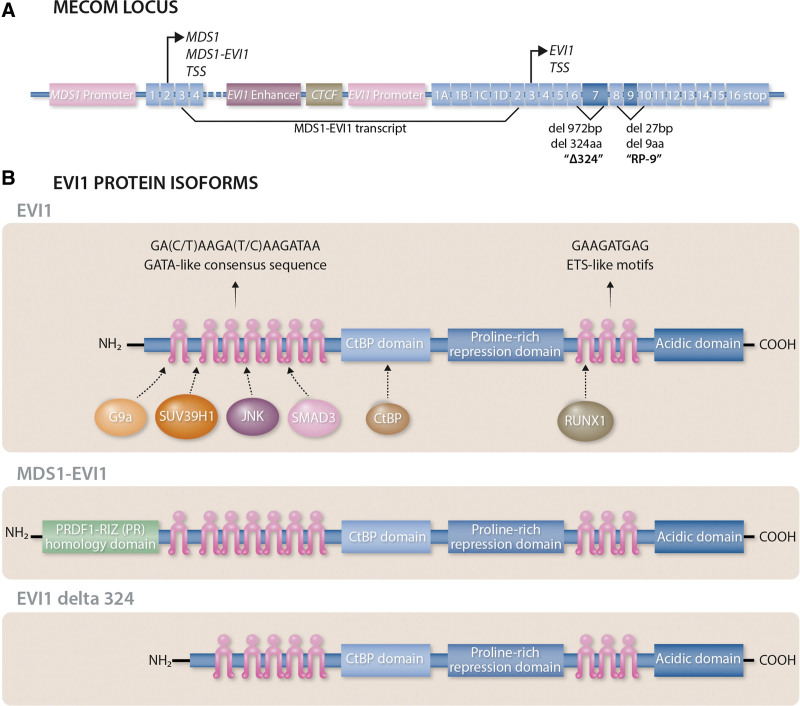Figure 1.
The MECOM locus and EVI1 protein isoforms. (A) The MECOM locus: The MDS1 and EVI1 complex locus (MECOM) encodes several transcripts and protein isoforms through differential splicing and the presence of 2 distinct transcription start sites (TSS), each with their own promoter region, located either upstream of the MDS1 cDNA or upstream of the EVI1 cDNA. The MDS1 TSS generates the MDS1 protein and the MDS1-EVI1 protein via alternative splicing of exon 3 of MDS1 to exon 2 of EVI1. Alternative splicing events of EVI1 include a deletion of 972bp within exon 7, resulting in the so-called EVI1 delta 324 isoform, as well as an exon skipping event of the 27bp long exon 9, resulting in the so-called RP-9 isoform. (B) EVI1 protein isoforms: The EVI1 protein has 2 distinct zinc finger domains. ZF1, containing 7 zinc finger repeats, is located at the N-terminus of the protein and binds to GATA-like consensus sequences. The more distal ZF2, containing 3 additional zinc finger repeats, binds to ETS-like motifs. EVI1 can interact with the histone methyltransferases G9a and SUV39H1 via ZF1, as well as the protein kinase JNK and the transcription factor SMAD3. EVI1 additionally possesses domains to directly interact with the transcriptional corepressor CtBP and the transcription factor RUNX1. Alternative splicing of exon 3 of MDS1 to exon 2 of EVI1 results in the N-terminal addition of the PRDF1-RIZ (PR) homology domain in the MDS1-EVI1 protein. The deletion of 972 bp within exon 7 of EVI1 leads to a deletion of 324 amino acids and the so-called EVI1 delta 324 protein isoform lacking zinc finger motifs 6 and 7 within ZF1.

